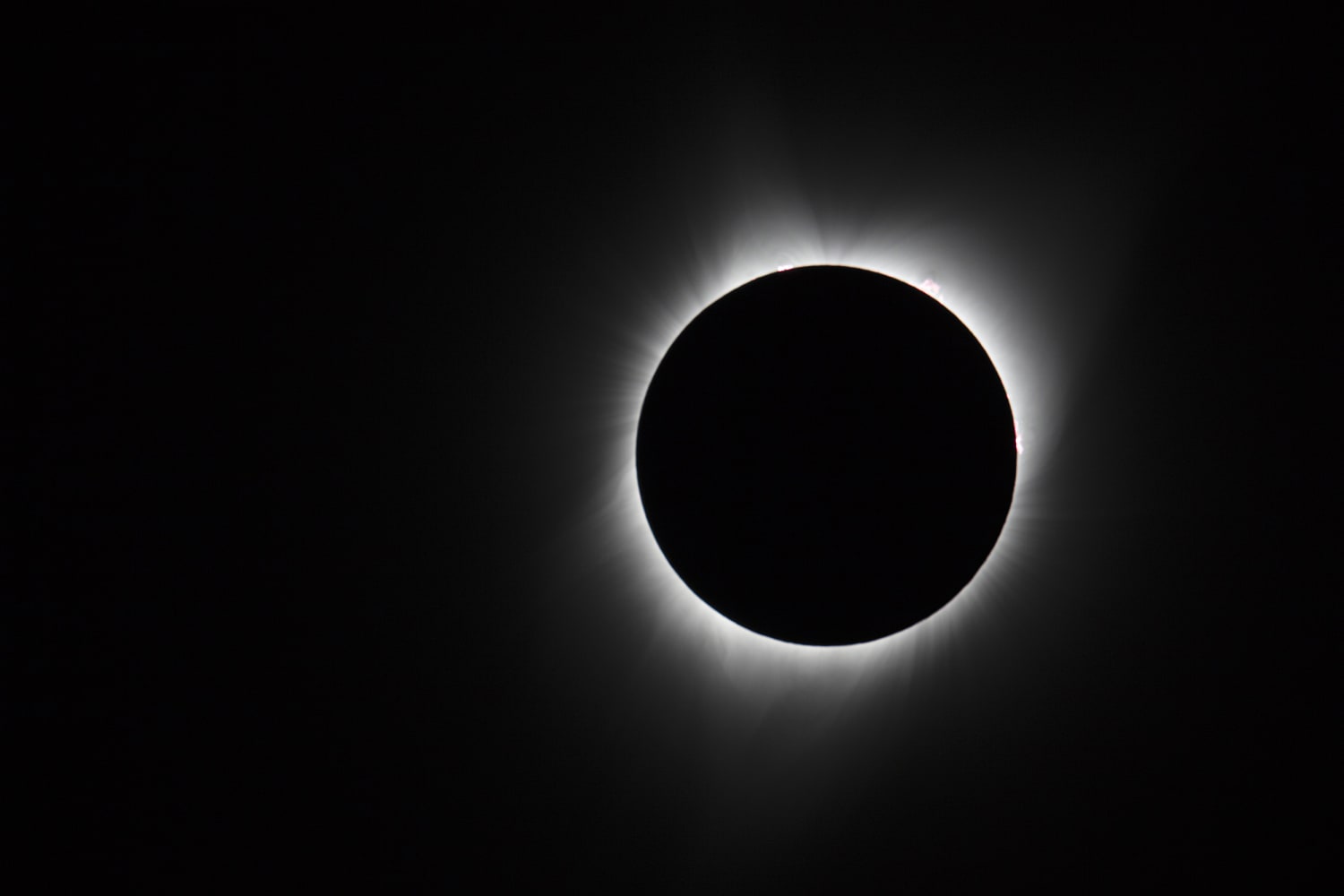
For the millions of people across North America who will view a total solar eclipse on April 8, this will be a stunning display — a chance to see the Moon completely blocking the face of the Sun.
But for scientists, it's a rare opportunity to study the Earth, Moon and Sun “in very different ways than we normally do,” said Pam Milroy, NASA's deputy administrator.
One of the agency's main priorities will be to monitor the Sun's outer atmosphere, or corona, which cannot normally be seen because the star is so bright. During a total solar eclipse, the corona appears as faint wisps around a glowing halo when the Moon blocks light from the Sun's surface.
“Things happen with the corona that we don't fully understand, and the eclipse gives us a unique opportunity to collect data that may give insight into the future of our star,” Milroy said at a press conference last week.
Scientists are interested in corona because it plays a major role in transferring heat and energy to the solar wind, which is the continuous flow of charged particles emitted from the sun’s outer atmosphere. The solar wind ebbs and flows, sometimes blasting at great force Solar flares in the space. These radiations can hit the Earth with electromagnetic radiation, potentially causing power outages and disrupting power grids.
Amir Kaspi, a solar astrophysicist at the Southwest Research Institute in Boulder, Colorado, has an instrument mounted on the nose of a WB-57 plane that will study the sun's atmosphere as the plane chases the eclipse.
It's a golden opportunity, he said, because even special telescopes that can block starlight, known as coronagraphs, have limits.
“A total solar eclipse is like a perfect natural corona,” he said. “The Moon comes between us and the Sun, just the right size in the sky to block the Sun's disk but not much more than that.”
CASPI will focus on trying to understand the origin of the solar wind. He also hopes to gather clues about a long-standing mystery: why the temperature of the corona is millions of degrees hotter than the surface of the Sun.
He pioneered this method of imaging the sun's corona in 2017, during the last total solar eclipse to cross the continental United States.
“We didn't know what we were going to get,” he added. “It was tough for a while, and then we got amazing data. I saw it coming down from the live satellite feed.
The WB-57 can fly at an altitude of 60,000 feet, well above any clouds and high enough that the Earth's atmosphere does not interfere with observations.
Many researchers plan to collect data about the sun's atmosphere from other observation points during the eclipse, including from space.
Several spacecraft, including NASA's Parker Solar Probe, will be training on the Sun throughout the celestial event. The probe was launched in 2018, so it was not available to study the 2017 solar eclipse.
In 2021, the Parker Probe became the first spacecraft to fly through the corona, and has since made more than a dozen close approaches to the Sun. Due to the timing of its orbit, the probe will not be in a close encounter on April 8. But it will be close enough to the Sun to measure and image the solar wind as it streams out charged particles, according to Nour Rawafi, head of Parker's department. Solar Orbiter project scientist and astrophysicist at the Johns Hopkins Applied Physics Laboratory.
In addition, an ESA spacecraft, known as Solar Orbiter, will orbit almost directly above the Parker Solar Probe at the time of the eclipse. The observatories will work together to capture details of the sun's atmosphere and solar wind.
“It is one of the rare occasions when these two spacecraft come close to each other,” Al-Rawafi said. “So, we'll have a lot of synergies between them, between all the observations we'll be doing during the eclipse from Earth, which is absolutely unprecedented.”
The Sun has been heading toward the peak of its roughly 11-year cycle of activity, expected in 2025. This means the Parker Solar Probe will have a front-row seat in the event of any flare-ups from the Sun.
There are no guarantees that such explosions will occur during the eclipse, but Al-Rawafi said that measurements of the solar wind from space will remain crucial to understanding the effects of the sun’s activity on Earth.
“These are the drivers of space weather, and the probe is probably the best tool we have, the best spacecraft mission we have, to help us understand that,” he said. “And what's the way to do it? Let's hope the sun gives us the biggest show it can produce.”
Even for non-scientists, the darkness that will temporarily dominate the afternoon sky along the so-called Totality Path will be an unusual experience.
“I remember the first time I learned that this is a very rare thing that our moon just happens to be the right size and distance to have this effect here on Earth,” Milroy said. “It's truly a miracle of our universe.”

“Web maven. Infuriatingly humble beer geek. Bacon fanatic. Typical creator. Music expert.”





More Stories
NASA Close to Deciding What to Do With Boeing’s Troubled Starliner Spacecraft
Scientists May Have Discovered ‘Dark Oxygen’ Created Without Photosynthesis: NPR
Real Scientists Lived on Fake Mars in a Texas Shed for a Year